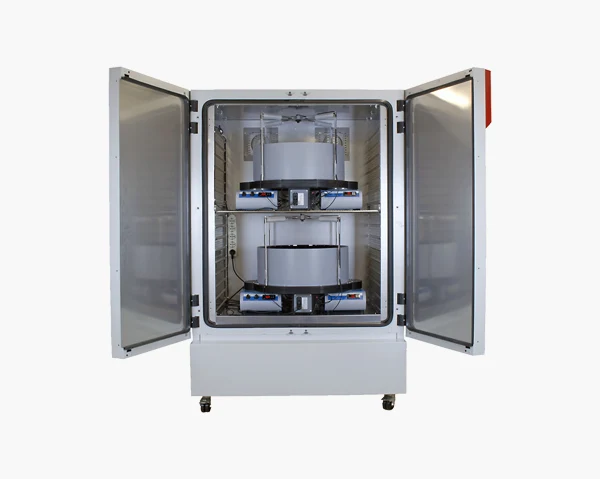Memory tests in rodents are essential tools in neuroscience and pharmacology to study learning, memory processes, and the effects of various treatments on cognitive function. Here are some of the main memory tests used in rodents:
Morris Water Maze (MWM)
Description: A circular pool filled with water made opaque with non-toxic dye. A hidden platform is submerged just below the water surface.
Procedure: Rodents are placed in the pool and must learn to locate the hidden platform using spatial cues around the room.
Assessment: Measures spatial learning and memory by recording the time it takes for the rodent to find the platform, the path taken, and the time spent in the target quadrant during probe trials.
Discover more on Morris Water Maze by Ugo Basile.
Radial Arm Maze (RAM)
Description: A maze with multiple arms radiating from a central platform, some of which contain food rewards.
Procedure: Rodents must learn and remember which arms contain rewards and avoid previously visited arms.
Assessment: Evaluates working and reference memory based on the number of correct and incorrect arm entries.
Discover more on Radial Arm Maze by Ugo Basile.
Novel Object Recognition (NOR)
Description: A test arena where rodents are exposed to two identical objects, followed by one familiar and one novel object in subsequent trials.
Procedure: Rodents explore the objects, and after a delay, one object is replaced with a new object.
Assessment: Measures recognition memory by recording the time spent exploring the novel object compared to the familiar one.
Y-Maze and T-Maze
Description: Mazes shaped like a 'Y' or 'T' with three arms.
Procedure: Rodents must choose between arms, often with one arm leading to a reward.
Assessment: Evaluates spontaneous alternation behavior (working memory) and learned tasks (reference memory).
Discover more on Y-Maze and T-Maze by Ugo Basile.
Fear Conditioning
Description: A chamber where rodents are exposed to a neutral stimulus (e.g., tone) paired with an aversive stimulus (e.g., foot shock).
Procedure: The rodent's freezing behavior is measured in response to the context or the tone alone.
Assessment: Measures associative memory by recording freezing behavior, indicating memory of the aversive stimulus.
Discover more on Fear Conditioning by Ugo Basile.
Passive Avoidance Test
Description: A two-chamber apparatus, one brightly lit and one dark, with a shock grid in the dark chamber.
Procedure: Rodents naturally prefer the dark chamber but receive a mild foot shock upon entering it.
Assessment: Measures memory retention by recording the latency to enter the dark chamber in subsequent trials.
Discover more on Passive Avoidance by Ugo Basile.
Barnes Maze
Description: A circular platform with several holes around the edge, one leading to an escape box.
Procedure: Rodents must use spatial cues to locate the escape box.
Assessment: Measures spatial learning and memory by recording the time and number of errors made before finding the escape box.
Discover more on Barnes Maze by Ugo Basile.
Object Location Task (OLT)
Description: A test arena with objects placed in specific locations.
Procedure: Rodents explore the objects, and after a delay, one object is moved to a new location.
Assessment: Measures spatial memory by recording the time spent exploring the moved object compared to objects in their original locations.
Contextual and Cued Fear Conditioning
Description: A variation of fear conditioning focusing on contextual (environment) and cued (specific stimuli) memory.
Procedure: Rodents are exposed to a context or cue paired with an aversive stimulus.
Assessment: Measures freezing behavior in response to the context or cue in subsequent trials, indicating memory retention.
Discover more on Fear Conditioning by Ugo Basile.
Elevated Plus Maze (EPM) for Memory
Description: An elevated maze with two open arms and two enclosed arms.
Procedure: Typically used for anxiety, but can be adapted to assess memory by introducing changes or objects.
Assessment: Measures exploratory behavior and memory by recording entries and time spent in different arms.
Discover more on Elevated Plus Maze by Ugo Basile.
These tests allow researchers to investigate various aspects of memory, such as spatial memory, recognition memory, associative learning, and working memory. By analyzing the performance of rodents in these tasks, scientists can gain insights into the underlying mechanisms of memory, the effects of genetic manipulations, and the efficacy of potential treatments for cognitive impairments.

